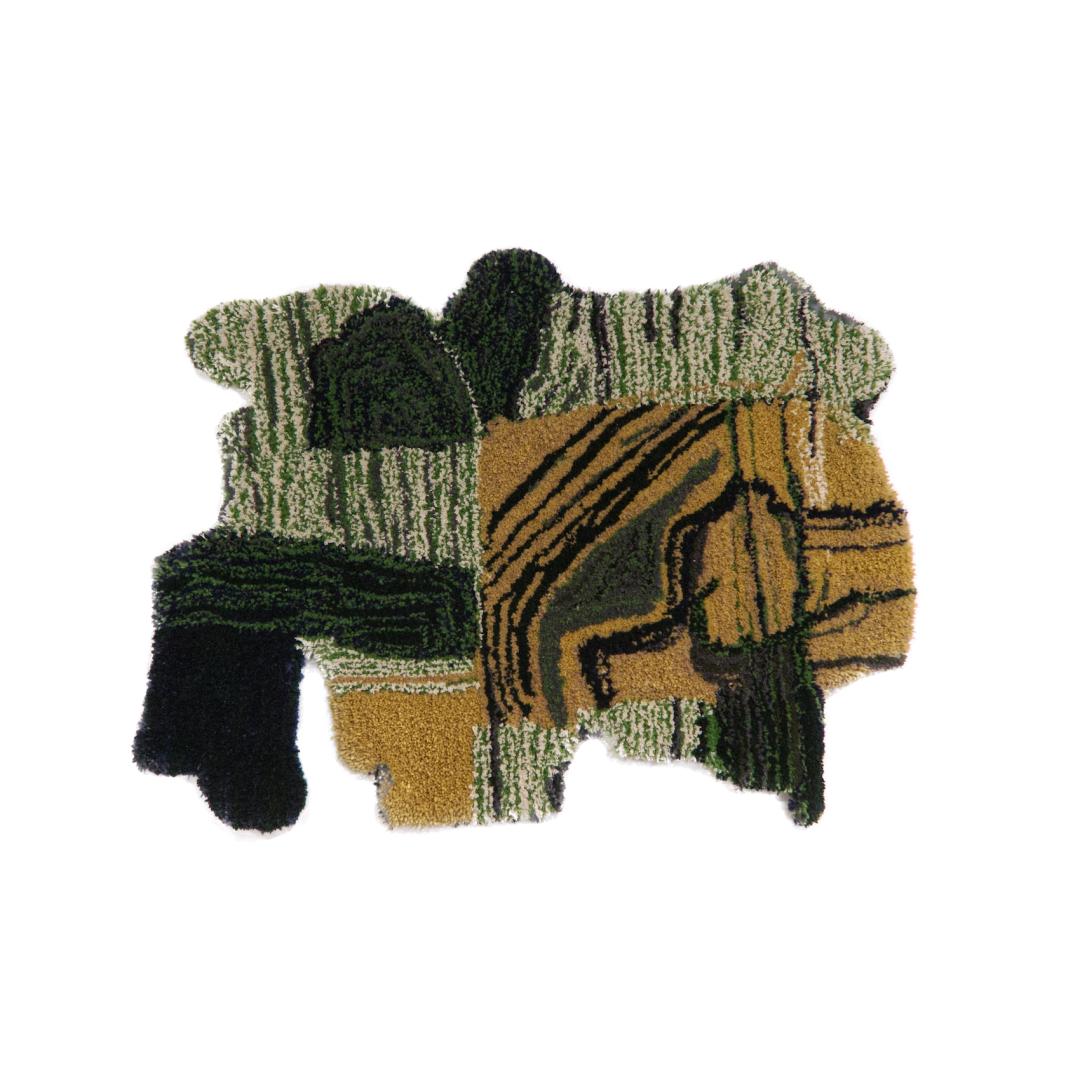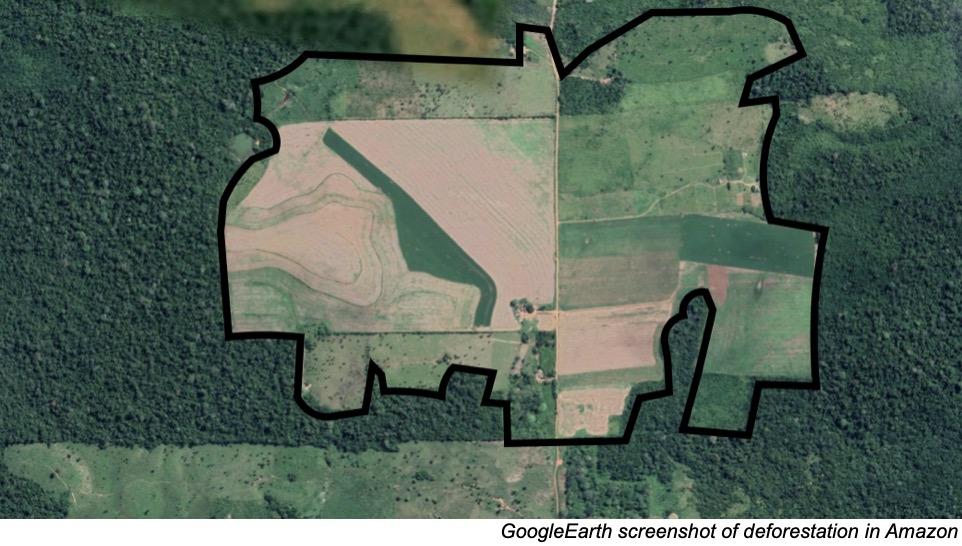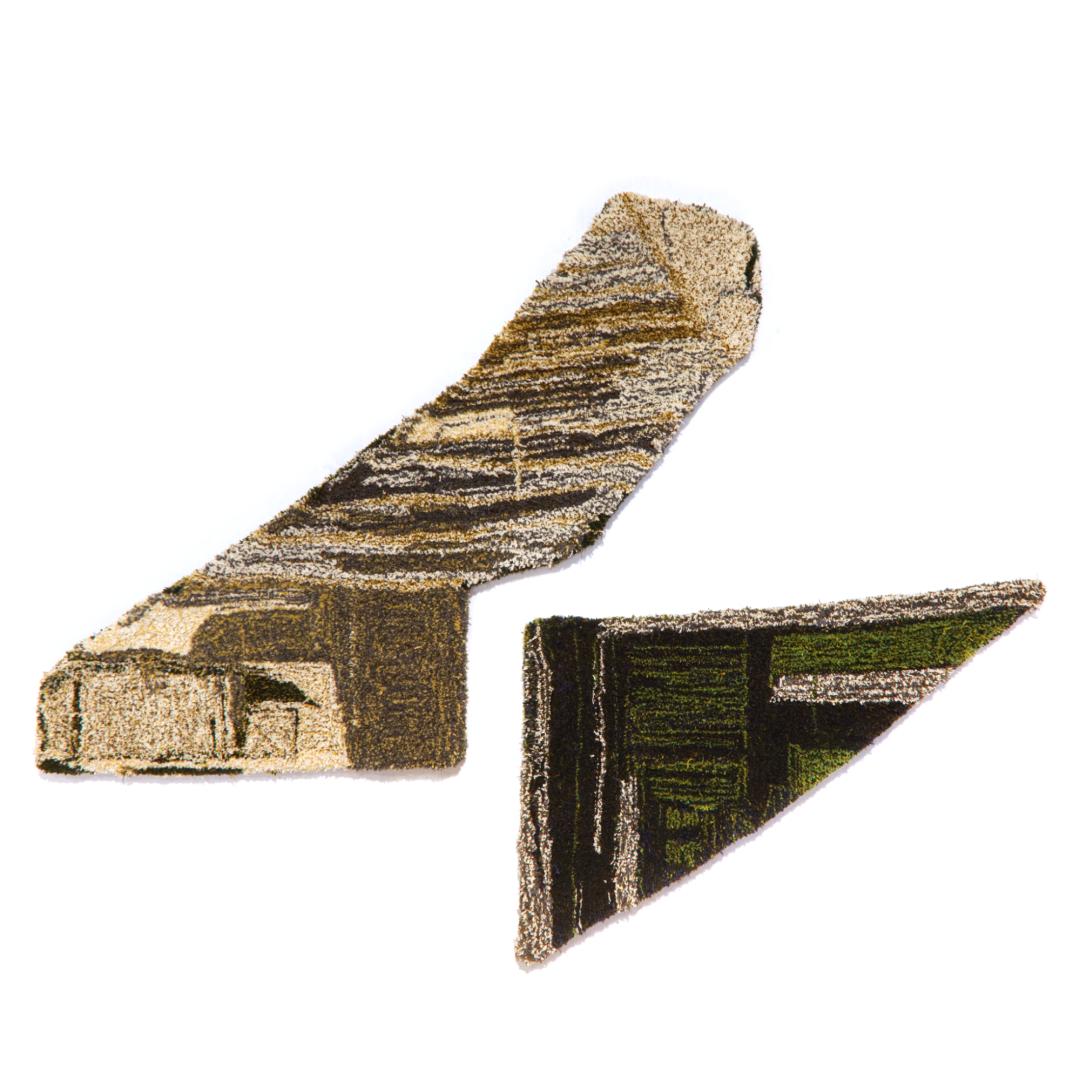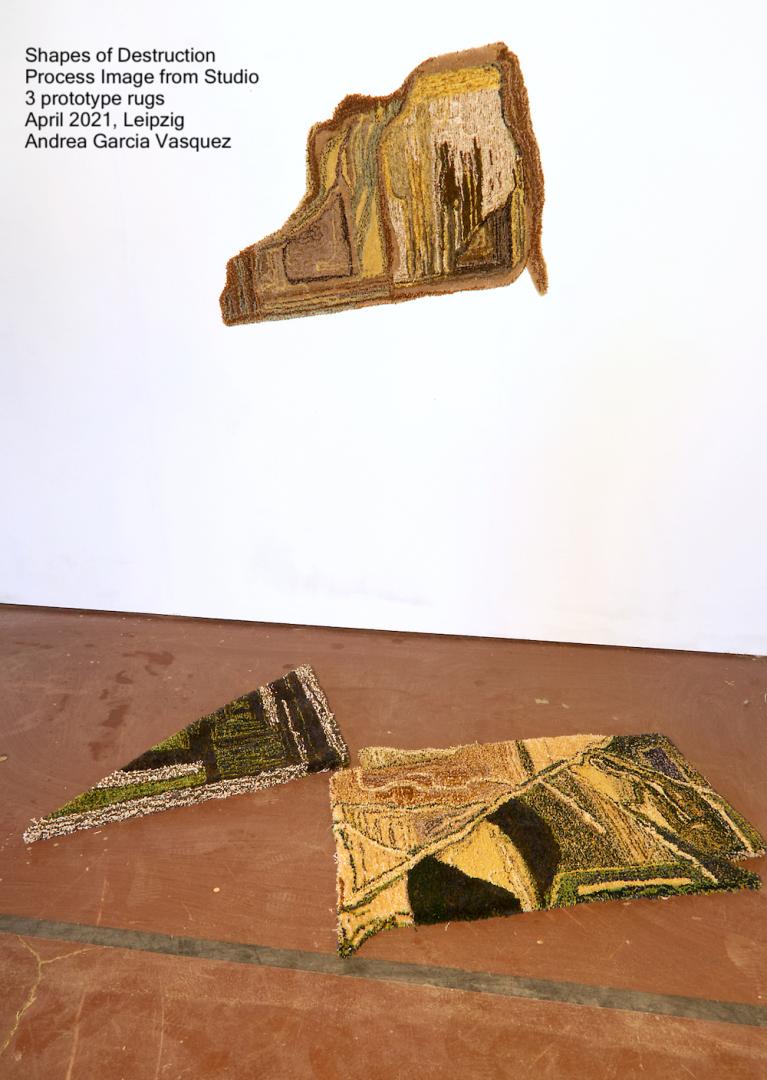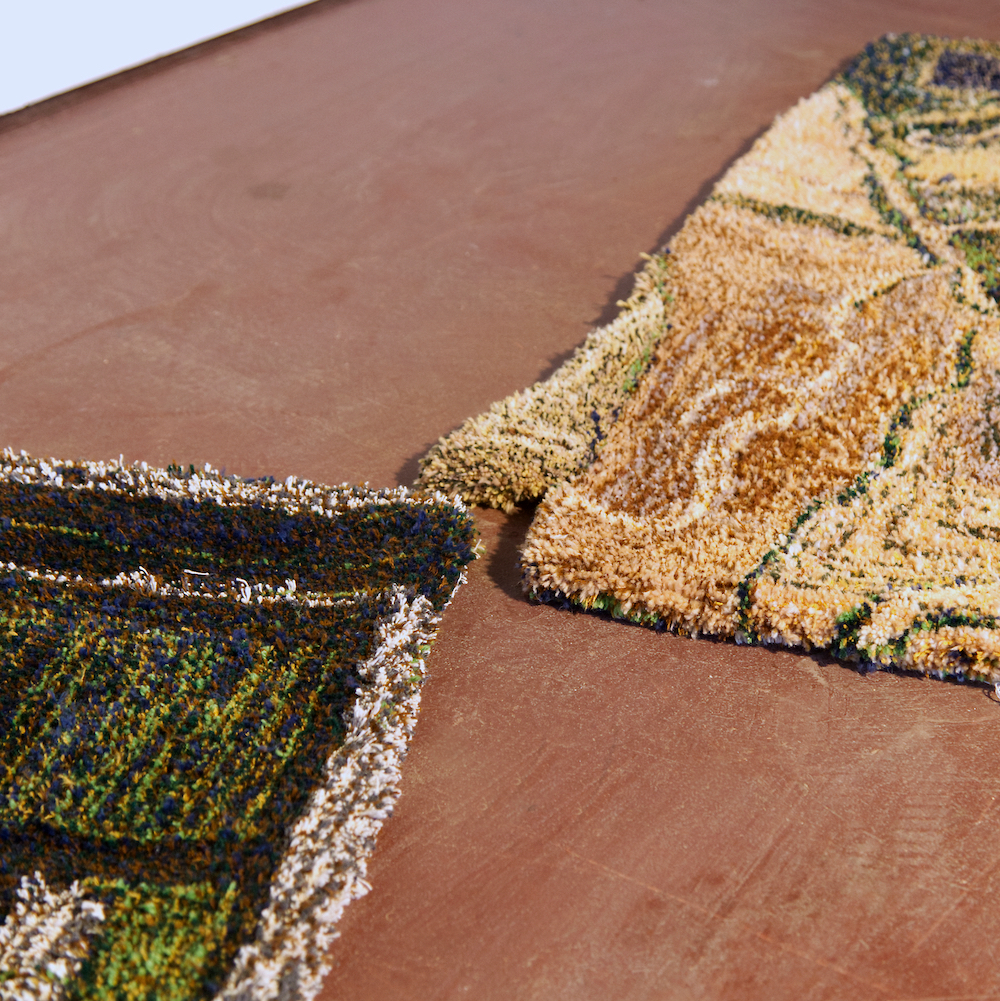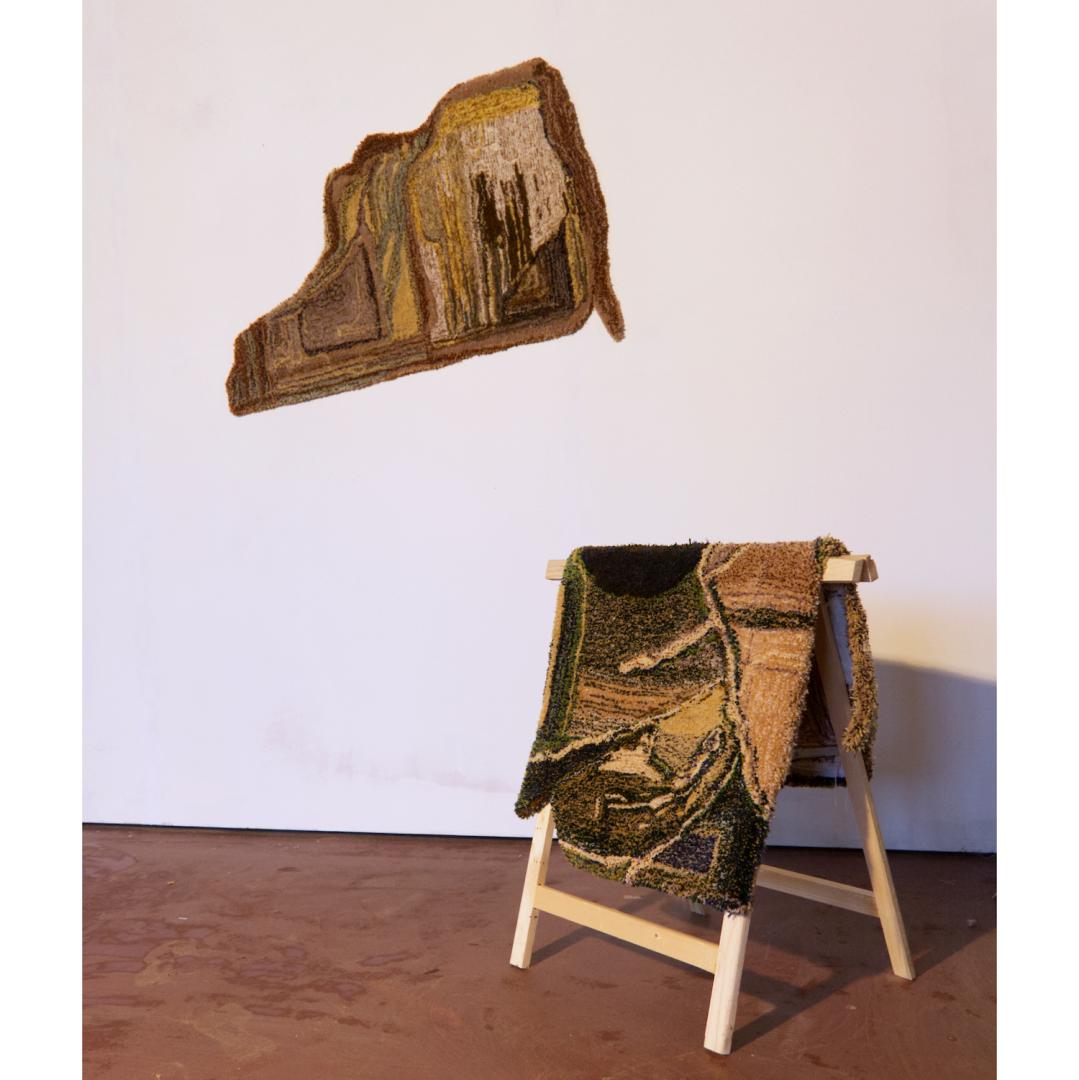Shapes of Destruction
Basic information
Project Title
Full project title
Category
Project Description
Taking a non-human perspective from satellite imagery, Shapes of Destruction is a collection of sustainable tufted rugs mediating the correlation between deforestation and domesticity. This innovative collection transports intangible patterns of environmental damage directly into domestic spaces, forcing one to confront the aesthetics of climate change and our relational position within the crisis. Each rug comes with GoogleEarth coordinates to its allotted deforested patch in the Amazon.
Project Region
EU Programme or fund
Description of the project
Summary
Since 2020, I have been artistically researching the illegal deforestation of the Amazon Rainforest through GoogleEarth. I was fascinated with the cut out shapes in the canopy and the aesthetic of destruction it evoked. These scars in the Amazon are all unique, tell a story of the human-nature-relationship, and are charged with violence. Illegal deforestation has increased by 10% since the pandemic lockdown in Brazil. Humans unknowingly contribute to this catastrophe every day, removed from the threatened indigenous cultures and violently destroyed landscapes.
I am an independent artist who wants to produce a collection of area rugs that engage with topics of house-hold items, environmental damage, and the human role in ecology today and future days. Shapes of Destruction illustrates the deforested patches in the Amazon in the form of tufted rugs and explores how recontextualizing these shapes in interior design can provoke a dialogue about environmental care and solidarity.
The series will be exhibited as an installation. Viewers will find themselves above; larger than; and face-to-face with the unique, tufted iterations of these damaged topographies- experiencing the Shapes of Destruction like God or Google Earth Satellite.
Each rug is unique in shape and size and made with organic wool, cotton, and recycled yarns. Each tufted rug branches out of it's expected functionality and spiral into a sphere of poetics, ecological RE-presentation, and a critical aesthetic of ecological suffering.
Shapes of Destruction is not only about the land humans destroy, but it is also seeking solidarity and inclusivity for indigenous peoples who continue to be killed unjustly for capitalist reasons in that area. I strongly believe this conceptual collection needs to be completed and exhibited in order to help shape an inclusive culture with the environment, it's species, and our own individual positions within it.
Key objectives for sustainability
Each rug is unique in shape and size and made with organic wool, cotton, and recycled yarns. To produce this collection I am strictly limiting the material to organic wools and cottons from Germany or EU and avoiding all micro plastics or ecologically harmful processes and materials. With this funding, I will be able to create a sustainable collection with sustainable materials with one year time which I otherwise could not accomplish without the funds.
With each rug sold, I will donate 10% to Amazon Watch and Rainforest Action Network which are organizations that seek justice for communities and nature in the Amazon Rainforest. These organizations work to advance the rights of indigenous peoples and I strongly believe indigenous, along with other colonized communities, have a fundamental right to continue their ancestral connections and coexistence with their environments.
The collection of these rugs will include a small catalogue printed including my sustainable processes, my research, philosophy, and project objectives stated in this proposal.
The series of rugs will be installed in a gallery where I would hope to cooperate with other fellows from New EU Bauhaus to hold lectures or workshops there. Visitors can sit on or interact with the rugs.
The concept of this installation is to address the position of humans within the environmental crisis. It generates a contemplative space for conversation about sustainability in house-hold items, art-making, and life in general.
Key objectives for aesthetics and quality
Shapes of Destruction is an investigation into the shapes that humans leave on the landscape and how the mapping of these shapes can be redefined and recontextualized in interior design to provoke a dialogue about environmental care and ecological solidarity. Each tufted rug branches out of it's expected functionality and spirals into a sphere of poetics, ecological RE-presentation, and a critical aesthetic of ecological suffering.
The colors, designs, and textures of the rugs are purely based on an archive of GoogleEarth screenshots I have been collecting since 2020. I am fascinated by the digital representation of landscape and nature and how far away it can all appear on a screen. Tufting such shapes of deforested patches in the Amazon into area rug sizes (70 -150 cm x 70 - 200 cm) shifts the distance and volume of this destruction. The yarn will be sustainably sourced. Building connections and partnerships with sustainable sources of a special quality and value will impact the aesthetic and design of the series.
The nature of a rug is to decorate the floor, to cover a surface, or to walk on. I am interested in making rugs because the feet touch it and the human eye peers down from above. This project transports intangible scars on the forest floor directly onto our interior floors far away. With curves, weird corners, and abstract, unconventional formations, Shapes of Destruction relates to and interacts with the architecture and design of a space is a symbol for the gravity of deforestation. The viewers adapt and react to a seemingly dysfunctional subject in the room, experience the nuances of this global warming aesthetic and how it may conjure mixed feelings.
Key objectives for inclusion
With each rug sold, I will donate 10% to Amazon Watch and Rainforest Action Network which are organizations that are helping and taking action for justice for communities and landscapes in the Amazon Rainforest. These organizations work to advance the rights of indigenous peoples and I strongly believe indigenous, along with other colonized communities, have a fundamental right to continue their ancestral connections and coexistence with their environments and species surrounding. The collection of these rugs will include a small catalogue about my research into the importance of indigenous tradition and preservation and provide alternative ways people far from the Amazon Rainforest can still take action for justice.
Raising awareness of indigenous bloodshed in the Amazon Rainforest, including histories and traditions of their coexistence with ecology lifts these marginalized communities up as role models for how humans should inhabit environments. Loggers and miners extracting from the same landscape exemplifies the contemporary distance we humans have to ecology and the destruction of the Amazon Rainforest. These points trigger a conversation of imaginative, possible futures for humans to continue inhabiting this world.
Inclusivity of BIPOC is a crucial necessity for an ecologically stable future. I will also include the partnerships made with yarn and material providers. This project invites an inclusive dialogue reflecting on our role as a species within ecology.
I am interested in making rugs because this ancient item is a grounding, or covering in a space. It demands the human to look down at it- a view like God or Google Satellites. This intervention in interior decoration transports the intangible patterns of environmental damage directly in our domestic spaces. Forcing us to position ourselves, confront and question the aesthetic of climate change and how it permeates in our daily routines.
Innovative character
Shapes of Destruction is innovative because it combines digital technology, advanced craft techniques, and an ancient house-hold item. The process of making this collection comprises centuries of human evolution using and relating to the environment.
Each rug is inspired by a specific GoogleEarth screenshot of deforested land. The collection itself begins with the complex Google databanks of documented proof of environmental damage. The documentation provided by Google is than reproduced by craft technique of tufting in Germany and ultimately placed inside interior spaces.
Taking a distance part of the world from GoogleEarth and reproducing it somewhere else provokes contemplation about the distance and influence we have to the world we live in. Reproducing these distant areas at a scale so that humans can interact with, walk on, or stand over generates another level of complexity in the human-nature-relationship. Furthermore, the unconventional shapes of the area rugs are recontextualized within architecture and domestic spaces.
Each rug will have a tag providing the GoogleEarth coordinates for the deforested patch it was inspired by. People can purchase the rugs for domestic spaces but still visit the location where illegal logging or mining took place. This forces us to confront the aesthetic and transformation of climate change in our daily activity.
As a visual artist, I am dedicated to making artworks and video works with the urgent goal to shift anthropocentric culture and thought away from the human and towards a beyond-human perspective. My goal is to create a narrative that inspires humans to think outside of themselves and question their relationship to their surroundings. Shapes of Destruction is a significant project in my artistic practice and research because it encapsulates a way of empathetically telling a story about nature with a voice that challenges capitalist and white supremacist culture.

